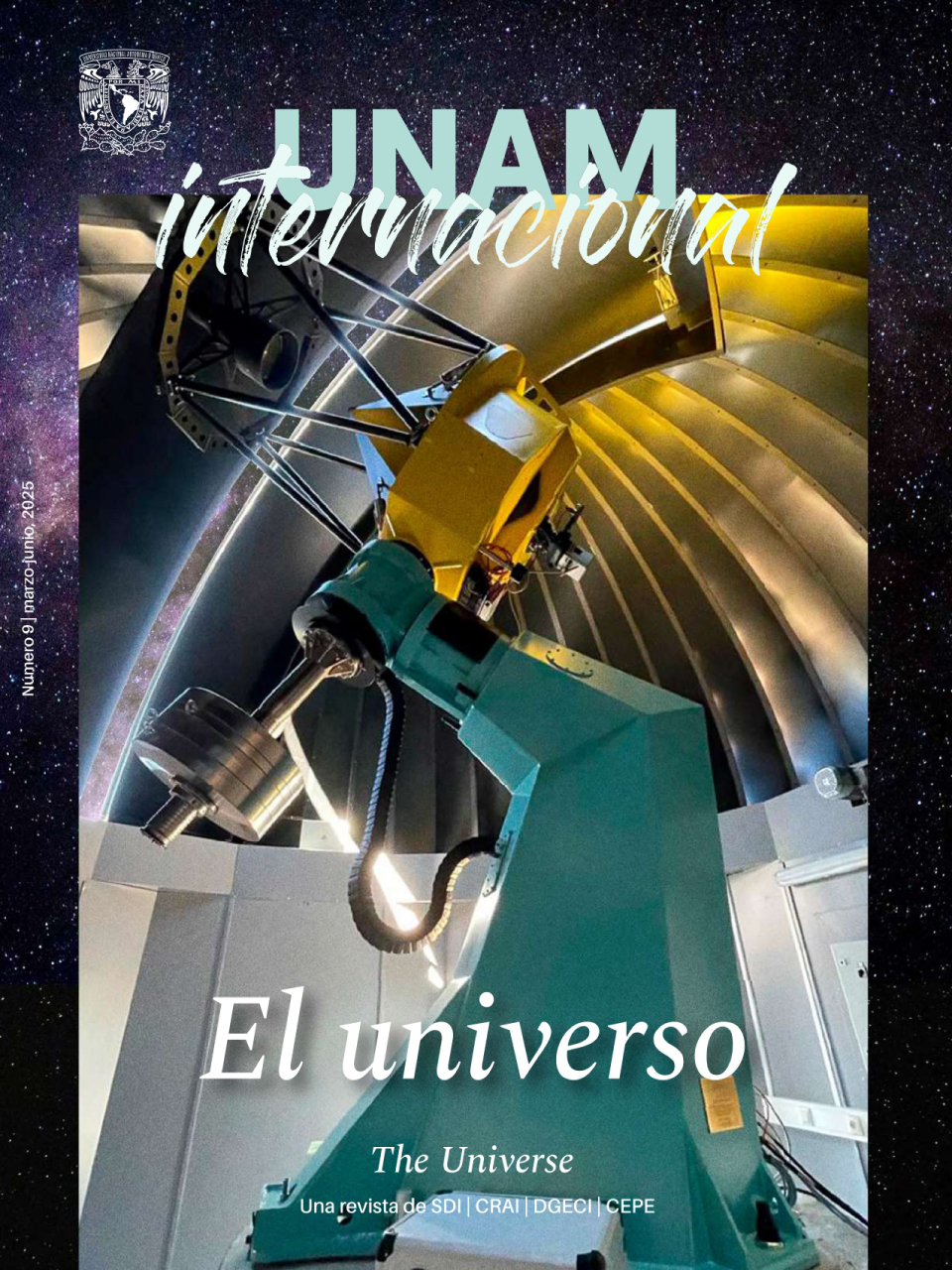Ellas y las estrellas. A Woman Astronomer’s Path
My interest in astronomy began when I was little. I always loved watching documentaries that showed impressive images of space taken with telescopes like the Hubble. At first, I wanted to be an astronaut, but I soon realized that would be complicated because Mexico doesn’t have a space agency like NASA—plus you have to be physically fit to travel into space. Later I learned that I could understand the universe through the study of light, which seemed fascinating to me, so I decided to become an astronomer.I began my physics studies at the Meritorious Autonomous University of Puebla, where my conviction to dedicate myself to astronomy grew. I developed my undergraduate thesis at the National Institute of Astrophysics, Optics, and Electronics (INAOE), and, because of it, I received the Francisco Medina Martinez National Prize for Earth Sciences in 2013, and graduated cum laude.
A part of astronomy that always caught my attention was the cores of dead stars such as white dwarfs, neutron stars, and black holes, because they are so exotic and extreme, with properties that we can never be reproduced in a laboratory on Earth, such as their large densities, their magnetic fields, and their very compact size.
Confident in the quality of education that UNAM could offer me, I moved to Mexico City to study a master’s degree at UNAM’s Institute of Astronomy, where I worked with Dr. William Lee. I graduated with honors and later received the Alfonso Caso Medal for university merit.
By then I was already fascinated by compact objects, so I had the opportunity to study my PhD at the University of Amsterdam, in the Netherlands. That was where I learned a lot about observations and analysis of data obtained with telescopes like Hubble.
I also experienced a different way of doing astronomy. It is no secret that there are more available resources for projects, access to large telescopes, and collaborations in other countries, but I believe that world-class astronomy is being developed in Mexico.
Studying abroad is not easy. From applying to being accepted, it is a long and competitive road. For me personally, it meant leaving everything I knew behind, but at the same time, experiencing so many new things and having a more global perspective was very enriching and made me grow both professionally and personally. I have always counted on the support of my family while being driven by my passion for astronomy. It is very important to me to show Mexico and the world that Mexican women do quality work and make important contributions to science.
After my stay in Amsterdam, I had the opportunity to do my first postdoc at Texas Tech University, where I won an award for my performance. I obtained later the Avadh Bhatia Postdoctoral Fellowship from the University of Alberta, Canada; I am the first Latin American woman to obtain it. At the same time, I received the prestigious Gruber Foundation Fellowship, awarded every year by the International Astronomical Union. These kind of scholarships allow you to develop your ideas independently.
I am currently a professor and researcher at the University of Texas Rio Grande Valley (UTRGV). I use several space telescopes and the largest telescopes on Earth for my research, which is very significant because I used to watch those telescopes on TV as a child and today they are my work tools. Apart from research and teaching, I dedicate part of my time to science promotion activities. I have created Ellas y las estrellas [see box], a project to make the work of Latin American women astronomers visible, with which I seek to encourage other women to get involved in astronomy. I think it is very important to show by example that, despite obstacles and limitations, Latin American women can compete with the best in the world. I also believe that people often have misconceptions about science and its importance because they have not had the opportunity to be in direct contact with it, which is why I love to develop and participate in outreach activities. This year, I was honored to receive the prestigious Cottrell Award given to research professors in the United States and Canada in the fields of physics, chemistry, and astronomy, which will allow me to continue with my research and my educational and science outreach initiatives.
Ellas y las estrellas
With support from the University of Texas Rio Grande Valley, the International Astronomical Union, and the Heising-Simons Foundation, the Ellas y las estrellas project carries out activities to raise awareness not only on astronomy topics, but especially “to highlight and promote the work of women in astronomy, especially Hispanic women”, as its “Vision” states. The goal of the project is to positively impact people’s lives by showcasing the work and experiences of Hispanic women astronomers, inspiring younger generations to actively participate in scientific activities.
Ellas y las estrellas activities include talks and fun experiments with vacuum chambers, telescope operation, and how rainbows and auroras are formed. Other outreach events since 2022 have addressed topics such as asteroids and the Hubble Space Telescope, and have had the participation of women astronomers from Chile, Mexico, Guatemala, and Argentina.
You can contact Liliana Rivera, the project leader, on the Ellas y las estrellas website: https://www.ellasylasestrellas.org/ and via email: ellas.ylasestrellas@gmail.com.
